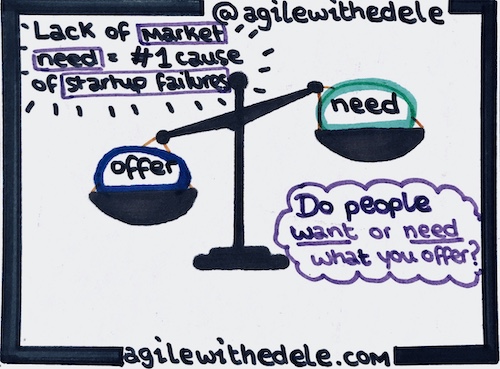Several years ago, I was asked this question during a job interview and it completely caught me off-guard. Innovation is a word that is used a lot, especially in the tech sector, and I thought I knew what it was until I struggled to verbalise it.
Back then, I described innovation as creating something new to help you stay ahead of your competitors and applying ideas that your customers actually need and find value in. As the interviewer pushed for more information about how to achieve innovation, I realised this was much more difficult to articulate. The irony here is that a few years prior to the interview I’d organised hackathons with the word ‘Innovation’ in the event name. The interview gave me a chance to reflect - what was it about the hackathons that were so innovative?
When you start to explore the number one reason why so many start-ups fail, it becomes easier to define what innovation actually is. The Top 20 Reasons Startups Fail report from CBS Insights lists lack of market need as the number one reason for failure, with other honourable mentions including user unfriendly product and ignoring customers. In other words, you can use the latest technology and create a product, but if noone ends up using it, it’s not creating any value. Is that innovation? I doubt it.

Thinking back to the hackathons I’ve organised and participated in, the most successful products that were created off the back of those couple of days filled a market need. Hackathons create a prototype in a short amount of time, moving quickly from an idea in someone’s head to something you can show off, get feedback on, and most importantly, determine whether or not there’s a need or want for your product. If more start-ups prototyped their idea earlier on, in a hackathon of sorts, they’d be able to change direction earlier, rather than spending years trying to launch something that people simply do not want.
So today, when asked “What is Innovation and How do You Achieve It?", my answer is thinking of something new that hasn’t been done before, considering the demographics most likely to use that product, spending a few days developing a working prototype to show off the main concept, and then asking for feedback from your target audience. If it’s something those people are excited by and if they are actively providing feedback on how you could develop it further, you’re onto something. I’m a big advocate for data-driven decisions, and keeping feedback loops short is almost mandatory to innovate. In short, innovation is about identifying something that hasn’t been done before, creating a basic prototype, asking several people from your target market for feedback, and using this to decide how to move forward.